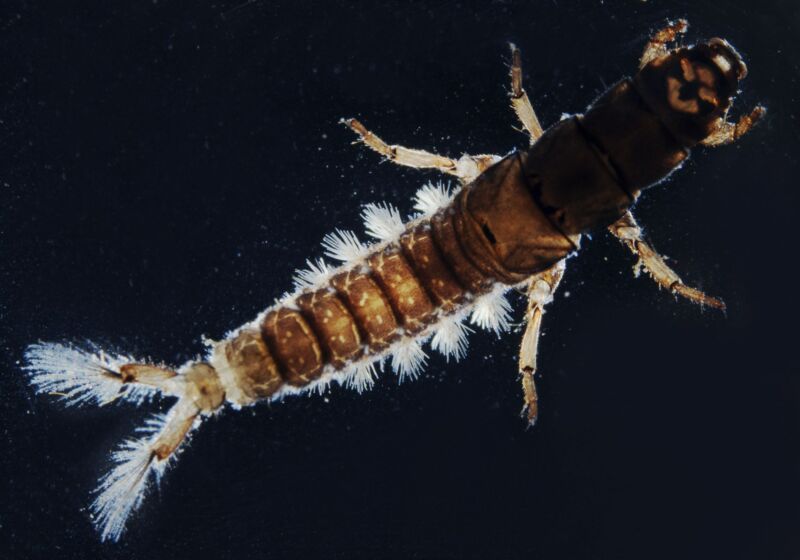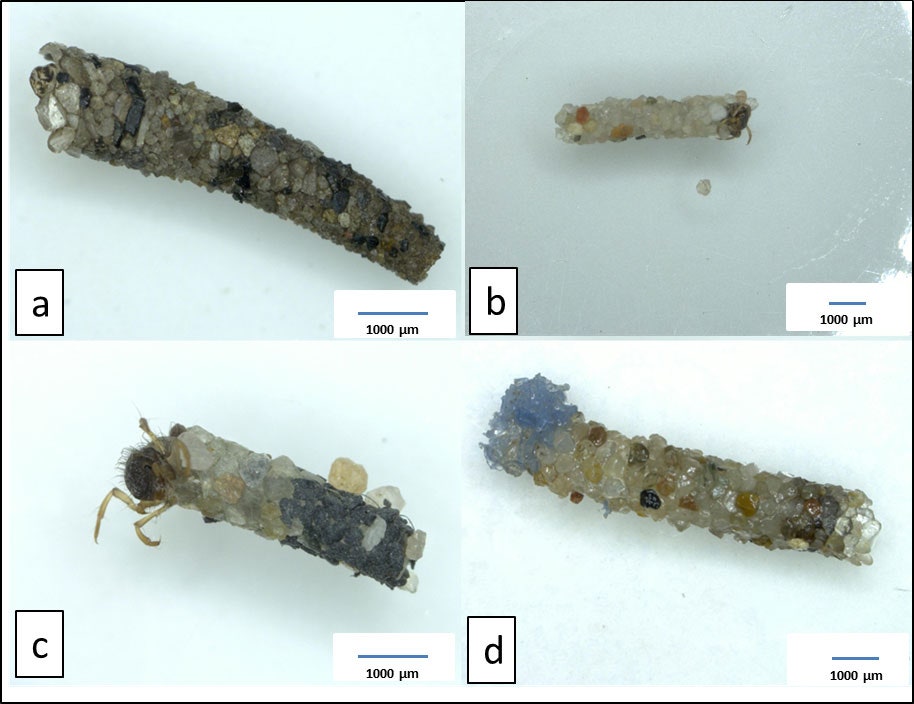Caddis fly larvae are now building shelters out of microplastics

Enlarge (credit: Roland Birke | Getty Images)
Crawling along the world's river bottoms, the larvae of the caddis fly suffer a perpetual housing crisis. To protect themselves from predators, they gather up sand grains and other sediment and paste them all together with silk, forming a cone that holds their worm-like bodies. As they mature and elongate, they have to continuously add material to the case-think of it like adding rooms to your home for the rest of your life, or at least until you turn into an adult insect. If the caddis fly larva somehow loses its case, it's got to start from scratch, and that's quite the precarious situation for a defenseless tube of flesh. And now, the microplastic menace is piling onto the caddis fly's list of tribulations.
Microplastic particles-pieces of plastic under five millimeters long-have already corrupted many of Earth's environments, including the formerly pristine Arctic and deep-sea sediments. In a study published last year, researchers in Germany reported finding microplastic particles in the cases of caddis flies in the wild. Then, last month, they published the troubling results of lab experiments that found the more microplastic particles a caddis fly larva incorporates into its case, the weaker that structure becomes. That could open up caddis flies to greater predation, sending ripple effects through river ecosystems.

Some examples of caddis fly cases. Image A was collected from the wild, and B was built from sand by a larva in the lab. In image C, the larva has incorporated black PVC particles. And in D, it's blue PET particles. (credit: Tamara Al Najjar)
You may wonder why one insect species matters. But caddis flies are critical actors in these ecosystems, and their struggles could well have consequences. Caddis fly larvae work an important gig hoovering up aquatic vegetation, keeping a river from getting overgrown. As flying adults, they serve as a critical food source for bats, frogs, and spiders. This study is also helping open up a new front in microplastic science: Researchers have been massively ramping up their work to understand how ingested microplastic particles might affect the physiology and behavior of animals, but relatively little has been done to determine how those particles might affect the structures that insects like caddis flies, bees, and termites build.
Read 12 remaining paragraphs | Comments